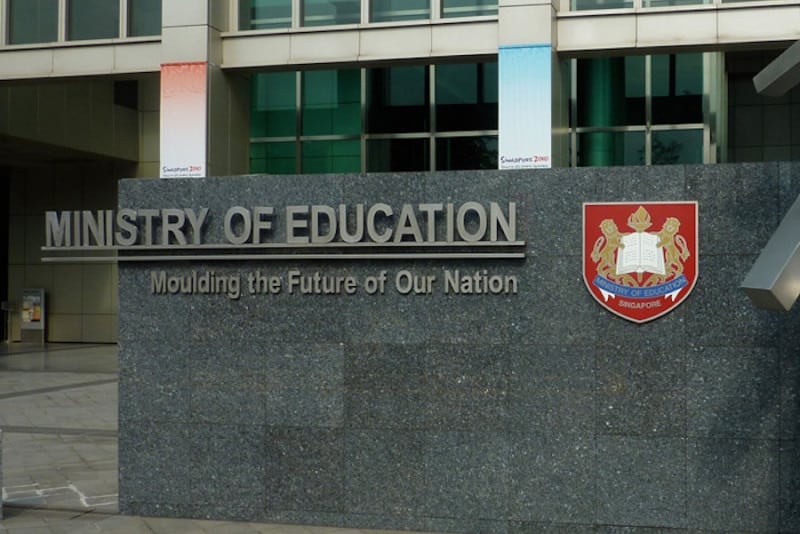List Of International Schools in Singapore
| INTERNATIONAL SCHOOL | DETAILS | WEBSITE | ADDRESS | TELEPHONE |
| Anglo-Chinese School (International) Singapore | Anglo-Chinese School (International) is a Methodist private school, owned by the Methodist Church in Singapore. Students take a 6-year course, with the IGCSE in the fourth year and the International Baccalaureate in the sixth year. Before 2007, students took the International A-Levels. | https://www.acsinternational.edu.sg/en/home-7/ | 61 Jln Hitam Manis, Singapore 278475 | (65) 6472 1477 |
| Australian International School Singapore (AISS) | The Australian International School, in Singapore is a co-educational international school in Singapore. The school is owned by Cognita. AIS is made up of three sub-schools: Early Years; an Elementary School and a Secondary School. AIS engages different global curricula across its sub-schools | https://www.ais.com.sg/ | 1 Lor Chuan, Singapore 556818 | Admissions +65 6517 0247 Reception: +65 6664 8127 |
| Canadian International School (Singapore) (CISS) | The Canadian International School is an international school in Singapore with two campus. CIS operates under International Baccalaureate Primary, Middle Years and Diploma programmes. The school accepts students from Nursery to Grade 12 | https://www.cis.edu.sg/ | 371 Tanjong Katong Rd, Singapore 437128 | Admissions hotline for prospective parents (65) 6734 8088 Finance and billing enquiries (65) 6467 1732 Parent and student ID cards (65) 6467 1732 |
| Chatsworth International School | Chatsworth International School is a co-educational international school in Bukit Tinggi Singapore for students from kindergarten to Year 13, aged 3 to 18+. It is an International Baccalaureate World School and is authorised to provide the IB Primary Years Programme, Middle Years Programme and Diploma Programme | https://www.chatsworth.com.sg/ | 72 Bukit Tinggi Rd, Singapore 289760 | (65) 6463 3201 |
| Dover Court International School (DCIS) | Dover Court International School is an international school in Singapore. Founded in 1972, the school delivers the English National Curriculum and International Baccalaureate Diploma Program to 1850 students between the ages of 3 and 18. | https://www.nordangliaeducation.com/our-schools/singapore | 301 Dover Rd, Singapore 139644 | General Enquiries (65) 6775 7664 |
| Dulwich College Singapore | Dulwich College Singapore is an international school located in Singapore, which opened in 2014. As a branch of Dulwich College International, it offers a comprehensive programme for students aged 2 to 18 and is separated into three schools: DUCKS, Junior School and Senior School. | https://singapore.dulwich.org/ | 71 Bukit Batok West Avenue 8, Singapore, 658966 | Admissions (65) 6890 1003 |
| EtonHouse International School | EtonHouse believes that children should take ownership of their learning. When children are happy and engaged, learning happens naturally and spontaneously. Open-mindedness, critical thinking skills, and a life-long love for learning are just as essential as acquiring knowledge. | https://www.etonhouse.edu.sg/ | 8 Stevens Road, Singapore 257819 | (65) 6746 3333 |
| French School of Singapore (Lycée Français de Singapour) (LFS) | International French School is a French international school in Singapore certified by the French Ministry of Education. Operational for over 50 years, IFS delivers a bilingual French-English education for international students aged 2 to 18, from kindergarten to high school. | https://www.ifs.edu.sg/ | 3000 Ang Mo Kio Ave 3, Singapore 569928 | International French School (Singapore) +65 6805 0000 Admissions for non-French speaking students |
| GEMS World Academy (Singapore) |
GEMS World Academy in Singapore (GWA) fully understands the concerns that parents go through in choosing the right school for their children when they move to Singapore. GWA is part of GEMS Education, the largest K-12 private education provider in the world, with a network of 60 schools across 15 countries. GEMS educates more than 140,000 students representing 173 different nationalities, and employs over 13,000 education specialists and staff from over 115 countries. |
https://www.xwa.edu.sg/ | 2 Yishun Street 42, Singapore 768039 | (65) 6230 4230 |
| German European School Singapore (GESS) | GESS is an international, multi-lingual, co-educational school in Singapore. GESS provides education to 1,800 students from more than 65 nationalities. | https://www.gess.sg/en/ | 2 Dairy Farm Ln, Singapore 677621 | Admissions (65) 6461 0881 GESS Reception (65) 6461 0801 |
| Global Indian International School Singapore (GIIS) |
GIIS crosses the 200-award milestone by winning 64 awards in education excellence in a single calendar year. GIIS Tokyo emerges as the world’s only overseas international school appearing in the top 10 CBSE rankings among the 600+ affiliated schools operating outside India. |
https://singapore.globalindianschool.org/ | 27 Punggol Field Walk, Singapore | 65-9631 6000 65-69147100 (International) 86-21603-14561 (Call from China) 1800-5722-810 (Toll-free–Call from India) |
| Hwa Chong International School (HCIS) | ISS International School is the longest established three programme authorised World IB school in Singapore. We have been refining our bespoke education approach for four decades. We welcome students across all ages and abilities from IB PYP (Kindergarten to Grade 5), IB MYP (Grades 6-10), right up to our IB DP (Grades 11-12) programme. | http://www.iss.edu.sg/ | 21 Preston Road Singapore 109355 | (65) 6475 4188 |
| ISS International School | ||||
| Invictus International School | ||||
| Knightsbridge House International School | ||||
| Nexus International School Singapore (NISS) | ||||
| North London Collegiate School (NLCS) | ||||
| Overseas Family School (OFS) | ||||
| Razum International School | ||||
| SJI International School (SJII) | ||||
| Singapore American School (SAS) | ||||
| Singapore Korean International School (SKIS) | ||||
| Stamford American International School | ||||
| Swiss School in Singapore (SSiS) | ||||
| Tanglin Trust School (TTS) | ||||
| The Japanese School Singapore (SJS) | ||||
| The Perse School Singapore | ||||
| United World College of South East Asia (UWCSEA) | ||||
| Waseda Shibuya Senior High School in Singapore |

Guide to International Schools in Singapore
What is the best international school in Singapore?
Overseas Family School:
Overseas Family School‘s (OFS) academic programs are demanding, well-established, and carefully crafted. One of the first international schools in Singapore to offer the flexible and well-regarded International Early Years Curriculum (IEYC), the International Primary Curriculum (IPC), and the International Baccalaureate (IB) programs, OFS is accredited by the Western Association of Schools and Colleges (WASC).
United World College of South East Asia East (UWCSEA):
We think everything is possible at United World College of South East Asia (UWCSEA) East. We offer exceptional facilities for academics, the arts, sports, and professional learning thanks to our prime location in Tampines, a rapidly growing neighborhood and commercial center. Families learn with students and teachers at East Campus, which has grown into a community center in and of itself.
Stamford American International School :
Our mission at Stamford American International School (SAIS) is to empower students to design their futures as intellectual, social, and ecologically literate citizens in our multicultural community. The International Baccalaureate (IB) Learner Profile describes adaptive, thoughtful, and honest young adults with a fostered inclination to design, innovate, problem-solve, and communicate.SAIS students not only have the opportunity to choose a desired educational pathway to help realize their academic ambitions but life skills reflective of this profile.
Chatsworth International School – Bukit Timah Campus:
The mid-sized, distinctive K–12 international school Chatsworth International School – Bukit Timah Campus opened its doors in 1995 in Singapore. Our two campuses are Western Association of Schools and Colleges (WASC) recognized, Edutrust certified (Singapore’s quality certification scheme), and IB world schools. They are also members of the East Asian Regional Council of Overseas Schools (EARCOS). As a three-program IB world school, we provide students from almost 50 other nationalities, ages 3 to 18, with the IB PYP, MYP, and DP curriculum.
Canadian International School:
The academically demanding Canadian International School (CIS) gets complimented with a wide range of language, fine arts, athletic, and service-learning experiences created to promote balance, foster relationships, and reveal the full potential of each learner.
One World International School :
Our school provides kids with the opportunity to learn in a small, attractive setting where they may concentrate on collaboration, teamwork, and conversation in a loving and nurturing environment. We train students to become the next leaders of our global economy by striking a balance between personalizing the educational experience and creating a community of student learners.
NPS International School :
NPS International School Singapore, a value-driven organization, gives the growth of the entire child a top priority. Students can develop into engaged learners, caring citizens, and critical thinkers in our carefully cultivated environment.
Are international schools better?
Choosing the best school for your child can be difficult, whether starting school for the first time, “moving up,” switching schools, or relocating to a new area. Each school has a specific curriculum, teaching strategies, core values, and benefits. The majority of international schools include IB and CAIE curricula, which expose students to a variety of different cultures and enhance learning. The advantages of attending an international school are listed below.
1. Contact with many cultures
Most foreign schools’ curricula must recognize before they can consider beneficial to students. Children get exposed to many communities, cultures, and customs, and learning enables them to appreciate various cultures in the world. International school students receive the information, understanding, and self-assurance necessary to interact with individuals from all backgrounds, cultures, and lifestyles. International schools have developed instructional strategies to expose students to as many different international practices as feasible. Children often learn in a diverse environment with peers, teachers, and peers from many cultures.
2. Growth in Personality
International schools celebrate differences in culture, countries, and personalities. Because of studying in an international school, children gain lifelong friendships with friends from other countries. And they come across many daily challenges, such as language barriers, emotional barriers, etc. Children gain confidence and a sense of independence when they successfully navigate these challenges. They acquire a sense of maturity, responsibility, and a profound understanding, whether they know it or not. It encourages students to push their boundaries, tries new things, and question their assumptions about themselves and their talents.
3.Increasing career opportunities
Because they are exposed to a variety of different cultures and languages while they are still in school, students who attend international schools might feel secure when searching for employment prospects. Since most recruiters prefer candidates who have experience working abroad and speak more than one language, children who attend international schools have already acquired additional language skills and are not experiencing any culture shock.
Which curriculum is the best in Singapore?
Here are some things to think about while selecting the best curriculum for your child, along with some reasons why the IB framework is superior to alternative methods in many ways.
International versus domestic curricula
Offering nation-specific curricula are several international schools in Singapore. Although many parents currently enroll their children in schools that provide an international curriculum, this choice gets historically preferred by parents who only intended to temporarily reside in Singapore before returning to their home country. Students are prepared for academic and professional success wherever in the world with this method.
When does the academic year start in Singapore international schools?
Most international schools in Singapore follow a June/July to August/September academic calendar. However, there is also a modest selection of international schools that begin in January, keeping with the Southern Hemisphere and Singapore’s government-run schools’ January to December academic year.Beginning in January 2021 are the academic years of Australian International School (AIS), Middleton International School (Tampines), Middleton International School (Upper Bukit Timah), Dimensions High School, Integrated International School (IIS), and The Grange Institution.
SJI International, Hwa Chong International School, and the Anglo-Chinese (International) School are institutions on this list. Although the MOE oversees these three neighborhood international schools, they are privately funded and free to choose their courses and tuition. These schools tend to have an international student atmosphere with a very high percentage of expatriates, even though at least half of the students must be Singaporeans.Since all these schools observe the same school holidays, the long break from December to January can be advantageous for parents of other children enrolled in the local educational system.
Which are the cheapest schools in Singapore?
National University of Singapore:
One of Singapore’s leading universities, the National University, is a public institution. Additionally, it holds a top spot in global rankings. As a public university, the National University of Singapore charges comparatively low tuition rates since students t can take advantage of government subsidies that cover about 50% of the cost of tuition. The National University of Singapore’s annual tuition charge for overseas students ranges from S$17,550 to S$64,650 after the subsidies.
Nanyang Technological University:
Nanyang Technological University, a public university with vast teaching and research facilities, is ranked second among Singapore’s institutions. NTU is one of the least expensive colleges in Singapore for overseas students because it is a public university and offers government subsidies to its students. The annual tuition rates for overseas students at this university range from S$17,550 to S$74,900 after the support deduction, with the cost of medical school being the highest. The annual tuition for all other majors at this university, excluding medicine, ranges from S$17,550 to S$38,300.
Singapore Management University:
Asia’s top university is Singapore Management University. It offers a range of undergraduate, master’s, and doctorate programs in business and other subjects, world-class research, and teaching get well-acknowledged. Another public university, Singapore Management, offers government funding to its students. The annual tuition for SMU international students is as low as S$24,500 – S$27,050 when a portion of the tuition cost gets cut, making it affordable for many families.
Singapore Institute of Technology:
The university collaborates with foreign universities to offer degree programs that directly assist the sustainable growth of a variety of Singaporean businesses and strengthens the university’s capacity for teaching and access to higher-level learning. This university does not have exceptionally high tuition costs for its international students. The annual tuition charge is roughly S$20,000 after deducting the subsidy.
Singapore University of Technology and Design:
The fourth public university in Singapore is the Singapore University of Technology and Design, which collaborates with Zhejiang University and the Massachusetts Institute of Technology. It is the first institution in the world to combine engineering and research with design and creativity. The government also provides financing to SUTD students since it is one of Singapore’s public institutions. The university’s annual tuition for international students excludes government aid, which is about S$28,700, putting it among the most affordable in Singapore.
How many international schools are in Singapore?
Singapore has a sizable private education market, with various schools and foreign schools to serve the nation’s expanding ex-pat population. Local kids cannot enroll at international schools unless Singapore’s Ministry of Education gives their consent. There are currently more than 60 international schools with programs like the American, British, and International Baccalaureate curricula. The IGCSE, A Levels, and IB Diploma Programme are popular credentials. Additionally, Singapore is home to several international schools, many of which have adopted the Reggio Emilia curriculum.
How much do international schools in Singapore cost?
You can see that your first-year investment varies significantly depending on the international schools you’re considering. You should probably look into international schools cost of a child’s first year is $33,801. But don’t give up. There is a wide range of prices, from roughly $17,000 to close to $50,000. Additionally, there are many schools. There are several foreign schools at the lower end of the pricing spectrum though tuition isn’t decreasing. It’s also essential to remember that while some expenses might seem excessive, other
International school fees contain various amenities and field trips.
Can Singaporeans join international schools?
Each school has a unique process for parents who want to enroll their children in overseas schools. Most schools have waiting lists, and every institution has different rules. Once you have determined where to apply, get in touch with the institutions you are interested in to schedule a tour and then meet with their authorized admissions officer. Singaporeans get not permitted to enroll in international schools unless MOE grants them special permission. You would have to speak with MOE personally to do this and make your case.
Is International School expensive in Singapore?
You are not required to pay the maximum annual tuition of $39,000 for international schools. In the city-state, more institutions with annual tuition rates under $25,000. Some schools provide the UK curriculum, the International Baccalaureate Diploma Program, India’s CBSE, the Singapore MOE curriculum, and the International Primary Curriculum for parents looking for a more reasonably priced education (IPC).
Both the early 2021-opened Invictus International School (Centrium) and the late 2021-opened Knightsbridge House International School provide two of the most reasonably priced English-Mandarin bilingual programs for the first years. Invictus (Centrium) and Middleton International School are two schools that intend to offer IGCSE and Level courses for less than $20,000 per year in the future (Tampines).
Most primary schools in Singapore charge between $5,500 and $20,000 in tuition, and most secondary schools charge $21,000 or more. Despite this, secondary students are enrolled (or will be enrolled) at St. Francis Methodist School, GIIS SMART, Middleton International School, Singapore Korean International School, 5 Steps Academy, Lycee Français de Singapour, DPS International, Yuvabharathi International School, Dimensions High School, and One World International School (Nanyang) for less than $20,000 a year.
Can I apply to a local and Ministry of Education-run school in Singapore?
The simple answer is yes, and there are several reasons why you might want to consider putting your kid in a neighboring school. The foreign student annual fees are between $8,000 and $15,000, which is at least 50% less than what comparable international institutions charge. Local schools offer a world-class curriculum with a reputation for math and science, a powerful concentration on learning Mandarin, being far less expensive, and exposing your child to the local culture. However, the Ministry of Education does not accept applications received after the Primary 1 application deadline for the 2022 academic year has passed for all non-Permanent Residents (PR) foreigners.
Which schools in Singapore offer a bilingual program?
CIS:
CIS has the knowledge and reputation of being a dual-language school because it was one of the first international schools in Singapore to offer a bilingual curriculum. On alternate days, students take English or Chinese/French lessons.
Stamford American International School (SAIS):
Students who are able or willing to go beyond the school’s daily Mandarin sessions are given “50/50 exposure to both Mandarin and English” through SAIS’ bilingual programme. One bilingual educator teaches classes, and the daily timetable gets equally split between the two languages.
EtonHouse International School (Broadrick):
The multilingual curriculum is available at EtonHouse’s Broadrick campus for children in infancy through primary school. Since 2001, this comprehensive school has provided a fully integrated multilingual option that adheres to the IB’s Primary Years Programme. Additionally, students in two daily 45-minute sessions, one for English and one for Mandarin, get devoted to improving their grammar, reading, and writing abilities.
Hillside World Academy (HWA):
Hillside World Academy (HWA), formerly the Chinese International School, has a proven track record of delivering a dual language program in English and Mandarin since 2006. Students swap between PuTongHua, Mandarin, and English throughout the school day. Each classroom has one native speaker of Mandarin and one of English.
GESS:
You can access a training program that offers English, German, or Danish through GESS. The elementary school years are when Danish and German subjects get caught. Students can choose to follow the German curriculum or the Primary Years Programme of the International Baccalaureate.
When can my children start school in Singapore?
Preschool is accessible in Singapore starting at age 3, and primary school begins around age 7. Children then transfer to secondary school, which is for pupils between the ages of 12 and 16 or 17. Singapore’s educational system is quite complex, with a wide range of school kinds, but the Ministry of Education does provide a helpful road map to assist in comprehending your alternatives.
The bulk of subjects are taught in the Singaporean system in English, even though all pupils from a very young age will also study their “mother tongue” language, and frequently additional languages get widely spoken in the region.
Pre-school:
Even while get not required to start school before the age of six, there are numerous schools for infants as young as six months. Some places will take newborns as young as three months old. These get used by working parents who don’t have live-in childcare. Typically, children between the ages of three and six will enroll in a kindergarten.
Primary Education:
Six-year-olds in Singapore start Primary One, the first year of a six-year education. In Singapore, schools only accept students within a predetermined catchment area determined by a predetermined radius around the school campus. Before continuing to secondary school for an additional four or five years, the child must pass the Primary School Leaving Examinations (PSLE) after six years.
Secondary Education:
The secondary education requirement is five years, and students typically range in age from 12 to 17. Depending on the results of their primary school exit exams, the kid gets enrolled in secondary school at one of three levels (Special, Express, or Normal). Students attend secondary school for four or five years. Special and Express Courses for the Singapore-Cambridge General Certificate of Education Ordinary (GCE O) Level exam can complete in four years by students.
Which is the best IB school in Singapore?
Here are our top selections for the best IB schools in Singapore, together with some background information on the program’s operation, to make an easier decision.
CHATSWORTH:
Chatsworth offers all IB programs, including the Primary Years Programme, Middle Years Programme, and Diploma Programme, giving pupils an inquiry-based education. With a strong English as an Additional Language curriculum to assist people with limited English competence, teaching is conducted entirely in English.
GEMS World Academy:
GEMS World Academy, a part of a sizable global network of international schools, offers instruction in the Primary Years Programme, Middle Years Programme, and Diploma Programme of the IB. The International Baccalaureate Career-related Programme, which aids students in bridging the gap between high school and post-secondary education, apprenticeships, or the workforce, is one of just a few programs offered at this particular school.
Canadian International School:
The entire IB curriculum consists of the Primary Years Program, Middle Years Program, and Diploma Program, oriented at Canadian International School. There are bilingual programs for Kindergarten and Primary children in Chinese-English and French-English for families who want to keep their child’s native tongue or introduce them to a new language.
Should I send my child to a private international school in Singapore?
With over 9,000 Private/International schools to choose from, finding the best one might be challenging for parents who want to provide their children with a top-notch education without breaking the bank. A few important considerations are listed below when picking a school.
Curriculum:
A Private/International School offers different programs within its curriculum for Pre Primary, Primary, Secondary, and High School students, depending on the child’s age. Additionally, these programs meet the demands of their students by their qualifications and suitability for admission.
Student fees:
Private/international schools typically charge higher tuition than a parent of an ex-pat child would in their home country’s public schools. However, this does not take away from the fact that they also give their kids access to a large selection of extracurricular activities, first-rate facilities, and instructors with high levels of training.
Services and Extracurricular Activities:
As was already mentioned, a Private/International school provides excellent facilities that help broaden your child’s horizons of knowledge. Olympic-sized pools, theatres, innovation hubs, and laboratories with cutting-edge technology assist its kids in developing a variety of hobbies.
Areas of Study/Languages
All private and international schools balance social sciences, mathematics, and the arts. They also provide a multilingual curriculum that encourages students to study two or more languages to English.











